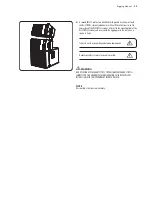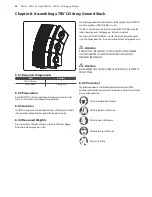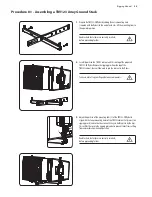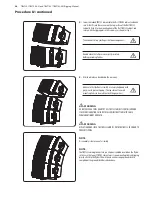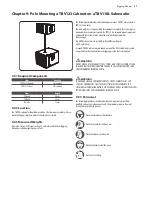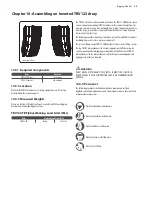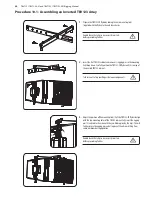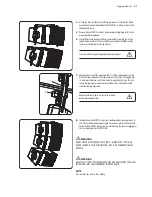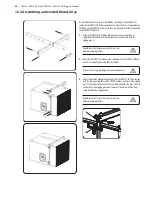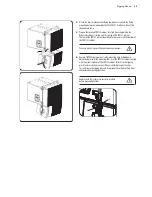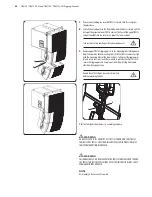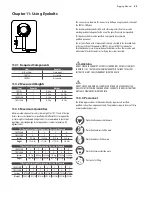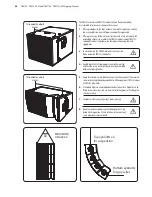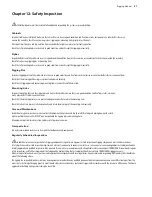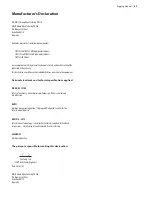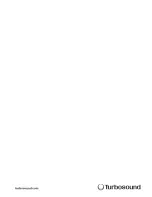
Rigging Manual
47
Chapter 12: Safety Inspection
!
!
The following notes must be read and followed before suspending the systems or ground stacking:
Cabinets
Inspect all cabinets carefully and make sure that all surfaces are clean, in good condition, and free from cracks, corrosion, or any other defects that may
weaken the assembly. Check for any missing screws, rigging pins, mounting links, pivot pins, or their nuts.
All cabinets must be clean and dry, and free from any debris that might cause incorrect or faulty operation.
Check that all mounting holes are clean and in good condition, and will accept the rigging pins correctly.
Flybar
Inspect the flybar carefully and make sure it is in good condition and free from cracks, corrosion, or any other defects that may weaken the assembly.
Check for any missing rigging pins, or mounting links.
Check that all mounting holes are clean and in good condition, and will accept the rigging pins correctly.
Rigging Pins
Inspect all rigging pins carefully and make sure they are in good condition and free from cracks, corrosion, or any other defects that may weaken them.
Check that the retaining ball bearings are present and operate correctly.
Check that all rigging pins and connecting mounting links are correctly and fully inserted.
Mounting Links
Inspect all mounting links and their pivot pins and nuts carefully and make sure they are in good condition and free from cracks, corrosion,
or any other defects that may weaken them.
Check that the retaining pivot pins are present and operate correctly to retain the mounting links.
Check that all nuts are present, installed correctly, and retain the pivot pins of the mounting links correctly.
Care and Maintenance
In addition to regular inspections, make sure that all equipment is kept clean and dry by careful brushing and wiping down with a cloth.
Light use of lubrication such as WD40® may be applied to the rigging pins and mounting holes.
All equipment must be stored in a clean and dry state to prevent corrosion.
Transportation
Use only recommended road cases to transport the loudspeakers and components.
Regularly Scheduled Inspections
!
!
In addition to the visual inspection of all rigging components, regular, more rigorous test and inspection of rigging components must also be carried out.
Safety legislation and test and inspection requirements will vary from country to country. In most cases, semi-annual or annual independent test and inspection by a
suitably approved and qualified inspector will be required. Users must ensure compliance with all applicable safety requirements. TURBOSOUND recommends regular
safety inspections, and further recommends that a logbook be kept detailing the test and inspection history of each TURBOSOUND rigging accessory.
Always wear protective head-wear, footwear and eye protection in accordance with local regulations. Anyone involved in suspending ANY sound system should take
note of the following advice:
The rigging of a suspended sound system may be dangerous unless undertaken by qualified personnel with the required experience and certification to perform the
necessary tasks. Fixing of hanging points in a roof should always be carried out by a professional rigger and in accordance with the local rules of the venue. The house
rigger and/or building manager must always be consulted.
Содержание TBV118L-AN
Страница 50: ......

